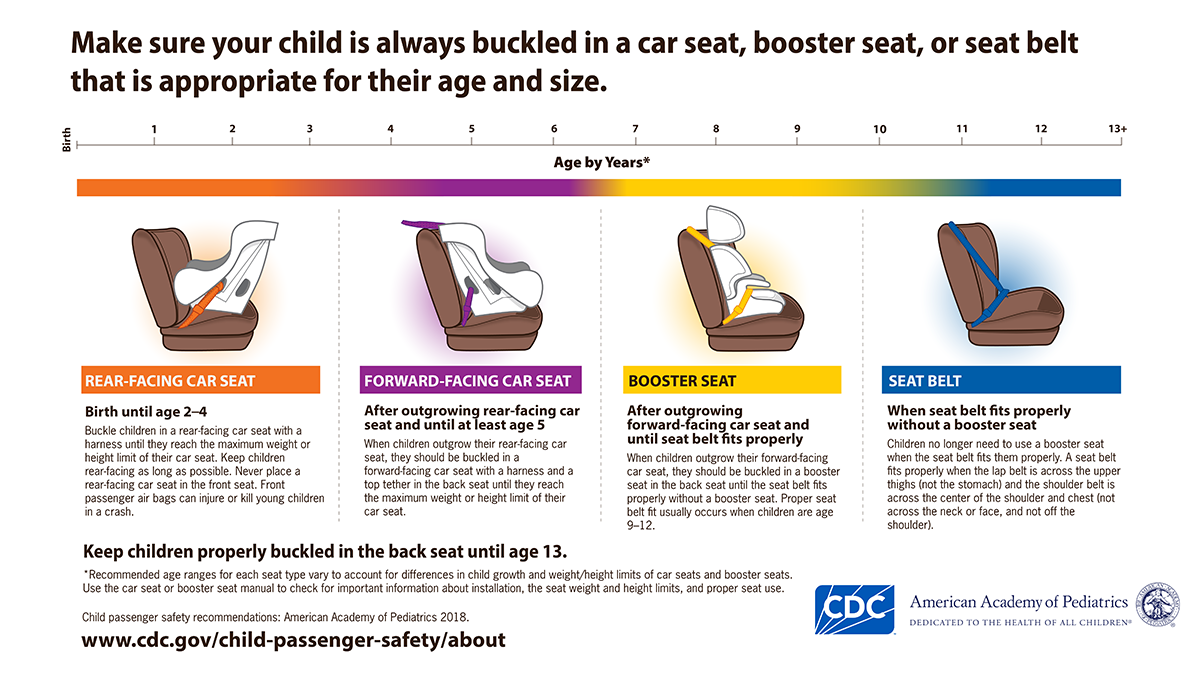Key points
- Motor vehicle injuries are a leading cause of death among children in the U.S., but many of these deaths can be prevented.
- To reduce risk of serious injury and death, properly buckle children in car seats, booster seats, or seat belts appropriate for their age and size.
Fast facts
In 2022, 599 child passengers ages 12 and younger were killed in motor vehicle crashes in the U.S.,1 and more than 106,000 were injured.2
Of the children who were killed in a crash, 35%A were not buckled up.1
Keep reading: Risk Factors for Child Passengers
Know the stages

Keep reading: Preventing Child Passenger Injury
Resources and tools
- Find a child passenger safety technician
- Find a car seat inspection station
- National Highway Traffic Safety Administration: Child Safety Information for Parents and Caregivers
- American Academy of Pediatrics (AAP) Links:
- AAP website for parents (Healthychildren.org): Car Seats: Information for Families
- AAP Child Passenger Safety Policy Statement
- AAP Child Passenger Safety Technical Report
- AAP website for parents (Healthychildren.org): Car Seats: Information for Families
- Insurance Institute for Highway Safety (IIHS) Links:
- CDC's Early Care and Education Portal – Safety, Health, and Injury Prevention
- Access this portal to learn more about how early care and education providers can keep children safe and healthy and prevent injuries among children
- Access this portal to learn more about how early care and education providers can keep children safe and healthy and prevent injuries among children
Content Source:
National Center for Injury Prevention and Control
- Restraint status was known for 543 of the 599 child passenger vehicle occupants ages 12 and younger who were killed in crashes in 2022. Among the 543 child passengers for which restraint status was known, 189 (35%) were unrestrained.
- National Highway Traffic Safety Administration (NHTSA). Traffic Safety Facts 2022 Data: Children (Report No DOT HS 813 575). Washington, DC: U.S. Department of Transportation, National Highway Traffic Safety Administration, National Center for Statistics and Analysis; June 2024.
- Centers for Disease Control and Prevention (CDC). WISQARS — Web-based Injury Statistics Query and Reporting System. Atlanta, GA: U.S. Department of Health and Human Services, Centers for Disease Control and Prevention, National Center for Injury Prevention and Control; 2024.
